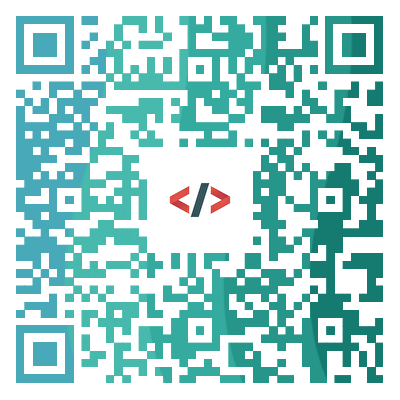第3课_单元测试编码
热度🔥:106 免费课程
授课语音
单元测试编码
单元测试是软件开发中用于验证单个功能单元(如函数、方法)是否按照预期工作的技术。在 Go 语言中,标准库提供了强大的单元测试支持。通过 Go 提供的 testing 包,可以方便地编写和运行单元测试。
1. 介绍:Go 语言的单元测试
1.1 单元测试的重要性
单元测试用于验证代码中最小的单元(如函数、方法)的行为是否符合预期。通过自动化单元测试,开发人员可以:
- 确保每个功能模块在修改后依然正常工作。
- 提前发现代码中的问题,减少集成时的错误。
- 提高代码的可靠性和可维护性。
1.2 Go 语言的 testing 包
Go 的 testing 包提供了所有编写和执行单元测试所需的功能。它的核心是 t *testing.T 类型,开发者通过它来报告测试结果和错误信息。
t.Errorf:记录错误但继续执行测试。t.Fatalf:记录错误并停止当前测试。t.Log:记录测试中的信息,输出到终端。
1.3 测试函数命名规范
Go 的单元测试函数必须以 Test 开头,后面跟上要测试的功能名称。例如,要测试 Add 函数,测试函数的名字应为 TestAdd。
1.4 测试文件的命名
单元测试代码文件的命名规则是以 _test.go 结尾。例如,main_test.go,mathutil_test.go 等。
2. 编写单元测试
2.1 基本单元测试示例
文件:mathutil.go
// mathutil.go 文件包含简单的数学操作
package mathutil
// Add 返回两个整数的和
func Add(a, b int) int {
return a + b
}
文件:mathutil_test.go
// mathutil_test.go 包含对mathutil包的测试
package mathutil
import "testing"
// TestAdd 测试 Add 函数
func TestAdd(t *testing.T) {
result := Add(2, 3)
expected := 5
if result != expected {
t.Errorf("Add(2, 3) = %d; expected %d", result, expected)
}
}
代码解释:
TestAdd:测试Add函数,验证 2 + 3 是否等于 5。t.Errorf:如果结果不符合预期,输出错误信息。
2.2 使用 t.Log 和 t.Fatalf 记录调试信息
文件:mathutil_test.go
package mathutil
import "testing"
// TestAddWithLog 测试 Add 函数并记录调试信息
func TestAddWithLog(t *testing.T) {
result := Add(2, 3)
expected := 5
if result != expected {
t.Errorf("Add(2, 3) = %d; expected %d", result, expected)
} else {
t.Logf("Add(2, 3) = %d; expected %d", result, expected)
}
}
// TestAddWithFatal 测试 Add 函数并在失败时停止测试
func TestAddWithFatal(t *testing.T) {
result := Add(2, 3)
expected := 6
if result != expected {
t.Fatalf("Add(2, 3) = %d; expected %d", result, expected)
}
}
代码解释:
t.Logf:记录测试中信息,如计算过程的中间结果。t.Fatalf:如果结果不符合预期,报告错误并停止当前测试的执行。
2.3 测试多个用例
有时需要测试多个输入和期望结果,可以通过表驱动的方式实现多个测试用例。
文件:mathutil_test.go
package mathutil
import "testing"
// TestAddMultiple 测试 Add 函数的多个用例
func TestAddMultiple(t *testing.T) {
tests := []struct {
a, b int
expected int
}{
{2, 3, 5},
{0, 0, 0},
{-1, -1, -2},
{100, 200, 300},
}
for _, test := range tests {
result := Add(test.a, test.b)
if result != test.expected {
t.Errorf("Add(%d, %d) = %d; expected %d", test.a, test.b, result, test.expected)
}
}
}
代码解释:
- 使用结构体数组存储不同的测试数据和期望结果,循环遍历进行测试。
- 通过
t.Errorf记录每个用例的错误信息。
3. 使用测试工具和命令
3.1 运行单元测试
运行当前包的所有测试:
go test运行特定测试函数:
go test -run TestAdd查看测试覆盖率:
go test -cover查看详细的测试输出:
go test -v
3.2 测试覆盖率和性能基准
生成覆盖率报告:
go test -coverprofile=coverage.out查看覆盖率报告:
go tool cover -html=coverage.out
3.3 基准测试
基准测试用于评估代码性能,Go 通过 testing.B 类型提供基准测试支持。
文件:mathutil_test.go
package mathutil
import "testing"
// BenchmarkAdd 测试 Add 函数的性能
func BenchmarkAdd(b *testing.B) {
for i := 0; i < b.N; i++ {
Add(2, 3)
}
}
运行基准测试:
go test -bench .
4. 总结
- 编写单元测试:Go 中的单元测试函数必须以
Test开头,采用testing包中的t *testing.T类型进行错误报告。 - 常用的测试方法:
t.Errorf、t.Fatalf、t.Logf。 - 表驱动测试:通过结构体数组测试多个用例。
- 工具和命令:通过
go test运行测试,使用-cover查看覆盖率,使用-v查看详细输出。
通过编写单元测试,可以确保代码的正确性和稳定性,提高软件质量和可维护性。












